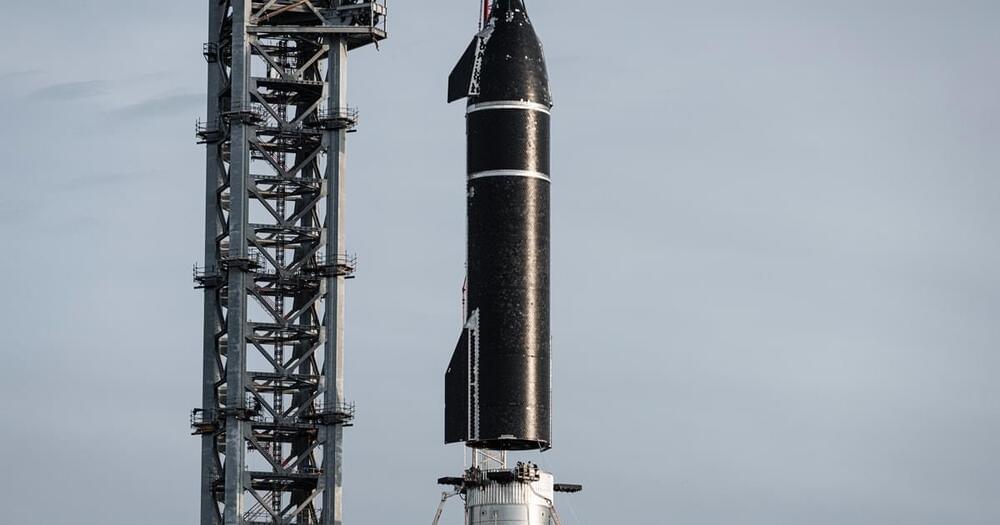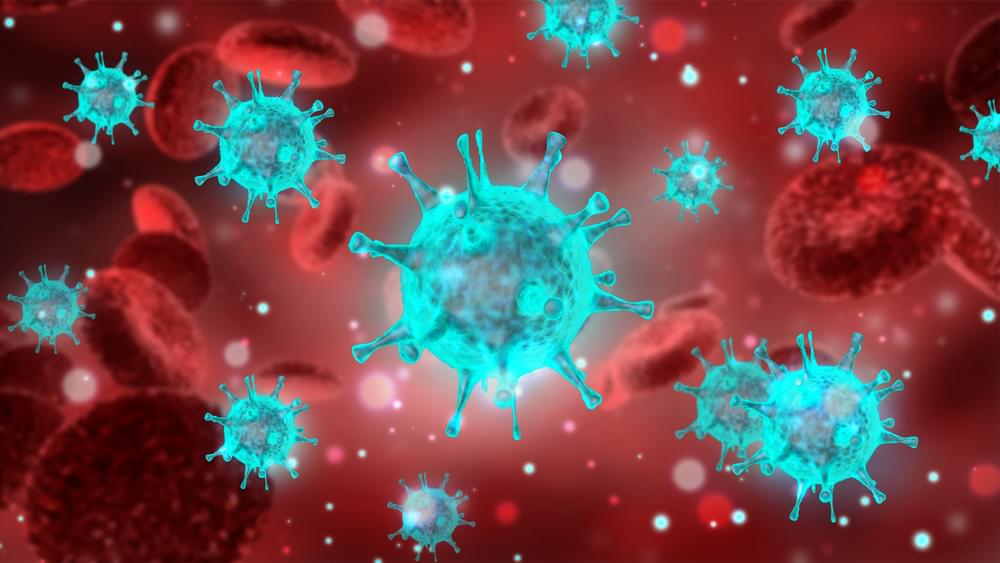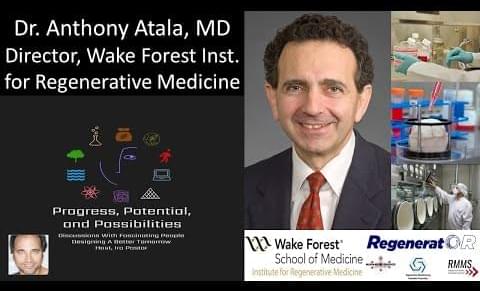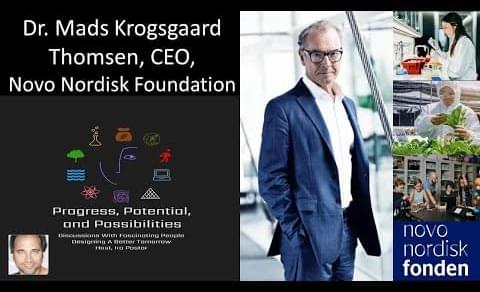Researchers filtered the air around two zoos and identified genetic material from dozens of species, a technique that could help track and conserve wildlife.
Japanese are increasingly turning to “social robots”, John Deere’s latest self-driving tractor will enable autonomous farming, a new South Australian craft beer has been designed entirely by AI.
Anhui research facility expected to provide plasma physics insights crucial to setting up industrial-size reactors to generate clean energy.
The launch tower is getting bigger.
SpaceX CEO Elon Musk has shared a video of the Starship’s impressive launch tower, ahead of a planned orbital flight.
Alquist, a house printing company, recently partnered with Habitat for Humanity to create a 3D-printed home in Williamsburg, Virginia.
I am happy to say that my recently published computational COVID-19 research has been featured in a major news article by HPCwire! I led this research as CTO of Conduit. My team utilized one of the world’s top supercomputers (Frontera) to study the mechanisms by which the coronavirus’s M proteins and E proteins facilitate budding, an understudied part of the SARS-CoV-2 life cycle. Our results may provide the foundation for new ways of designing antiviral treatments which interfere with budding. Thank you to Ryan Robinson (Conduit’s CEO) and my computational team: Ankush Singhal, Shafat M., David Hill, Jr., Tamer Elkholy, Kayode Ezike, and Ricky Williams.
Conduit, created by MIT graduate (and current CEO) Ryan Robinson, was founded in 2017. But it might not have been until a few years later, when the pandemic started, that Conduit may have found its true calling. While Conduit s commercial division is busy developing a Covid-19 test called nanoSPLASH, its nonprofit arm was granted access to one of the most powerful supercomputers in the world Frontera, at the Texas Advanced Computing Center (TACC) to model the budding process of SARS-CoV-2.
Budding, the researchers explained, is how the virus genetic material is encapsulated in a spherical envelope and the process is key to the virus ability to infect. Despite that, they say, it has hitherto been poorly understood:
The Conduit team comprised of Logan Thrasher Collins (CTO of Conduit), Tamer Elkholy, Shafat Mubin, David Hill, Ricky Williams, Kayode Ezike and Ankush Singhal sought to change that, applying for an allocation from the White House-led Covid-19 High-Performance Computing Consortium to model the budding process on a supercomputer.
Bio-Printing Complex Human Tissues & Organs — Dr. Anthony Atala, MD — Director, Wake Forest Institute for Regenerative Medicine, Wake Forest School of Medicine, Wake Forest University.
Dr. Anthony Atala, MD, (https://school.wakehealth.edu/Faculty/A/Anthony-Atala) is the G. Link Professor and Director of the Wake Forest Institute for Regenerative Medicine, and the W. Boyce Professor and Chair of Urology.
A practicing surgeon and a researcher in the area of regenerative medicine, fifteen applications of technologies developed Dr. Atala’s laboratory have been used clinically. He is Editor of 25 books and 3 journals, has published over 800 journal articles, and has received over 250 national and international patents. Dr. Atala was elected to the Institute of Medicine of the National Academies of Sciences, to the National Academy of Inventors as a Charter Fellow, and to the American Institute for Medical and Biological Engineering.
Dr. Atala is a recipient of the US Congress funded Christopher Columbus Foundation Award, bestowed on a living American who is currently working on a discovery that will significantly affect society; the World Technology Award in Health and Medicine, for achieving significant and lasting progress; the Edison Science/Medical Award for innovation, the R&D Innovator of the Year Award, and the Smithsonian Ingenuity Award for Bioprinting Tissue and Organs. Dr. Atala’s work was listed twice as Time Magazine’s Top 10 medical breakthroughs of the year, and once as one of 5 discoveries that will change the future of organ transplants. He was named by Scientific American as one of the world’s most influential people in biotechnology, by U.S. News & World Report as one of 14 Pioneers of Medical Progress in the 21st Century, by Life Sciences Intellectual Property Review as one of the top key influencers in the life sciences intellectual property arena, and by Nature Biotechnology as one of the top 10 translational researchers in the world.
Dr. Atala has led or served several national professional and government committees, including the National Institutes of Health working group on Cells and Developmental Biology, the National Institutes of Health Bioengineering Consortium, and the National Cancer Institute’s Advisory Board. He is a founding member of the Tissue Engineering Society, Regenerative Medicine Foundation, Regenerative Medicine Manufacturing Innovation Consortium, Regenerative Medicine Development Organization, and Regenerative Medicine Manufacturing Society.
Improving people’s lives globally from the world’s largest financial endowment — dr. mads krogsgaard thomsen, CEO, novo nordisk fonden, novo nordisk.
Dr. Mads Krogsgaard Thomsen, DVM, DSc., Ph.D., is the CEO of the Novo Nordisk Foundation (https://novonordiskfonden.dk/), an international foundation with a dual objective: to provide a stable basis for the commercial and research activities conducted by the companies within the Novo Group (of which Novo Nordisk A/S is the largest holdings) and to support scientific, humanitarian and social purposes. In 2020, the Novo Nordisk Foundation had a net worth of US$73.1 billion, making it the largest financial endowment in the world. Novo Nordisk Foundation owns Novo Holdings A/S, a holding company and majority shareholder of Novo Nordisk, as well as Novozymes, a global biotechnology company focused on the research, development and production of industrial enzymes, microorganisms, and biopharmaceutical ingredients. The foundation is also a major shareholder in more than 75 other companies.
Originally, trained as a veterinarian / DVM at The Royal Veterinary and Agricultural University (now part of the University of Copenhagen), where he also holds a DSc. in this domain, Dr. Thomsen started his career as a PhD pharmacology student at the University of Copenhagen, after which he worked three years as a researcher at LEO Pharma. Thirty years ago, he joined Novo Nordisk, initially as Head of Growth Hormone Research and subsequently as Senior Vice President of Diabetes R&D. In 1995, he was appointed Senior Vice President of Discovery and in 2000, he became Executive Vice President of Research & Development/Chief Scientific Officer. Over the years, he has headed the development of 20 medical drugs, especially within diabetes treatment and the groundbreaking development of GLP-1 technologies.
Dr. Thomsen has served as President of the Danish Academy of Technical Sciences and Chairman of the Board of the University of Copenhagen, where he is also an adjunct professor of Pharmacology.
Latest local news from Turkey, including top stories on education, minorities and more at DailySabah.com
It depends.
Warp drive. Site-to-site transporter technology. A vast network of interstellar wormholes that take us to bountiful alien worlds. Beyond a hefty holiday wish-list, the ideas presented to us in sci-fi franchises like Gene Roddenberry’s “Star Trek” have inspired countless millions to dream of a time when humans have used technology to rise above the everyday limits of nature, and explore the universe.
But to guarantee the shortest path to turning at least some of these ideas into genuine scientific breakthroughs, we need to push ideas like general relativity to the breaking point. Tractor beams, one of the most exotic ideas proposed by the genre that involves manipulating space-time to pull or push objects at a distance, take us beyond the everyday paradigm of science, to the very edge of theoretical physics. And, a team of scientists examined how they might work in a recent study shared on a preprint server.
“In researching sci-fi ideas like tractor beams, the goal is to push and try to find a demarcation point where something more is needed, like quantum gravity,” said Sebastian Schuster, a scientist with a doctorate in mathematical physics from the Charles University of Prague, in an interview with IE. And, in finding out if tractor beams can work, we might also uncover even more exotic forces, like quantum gravity. So strap in.
Full Story:









